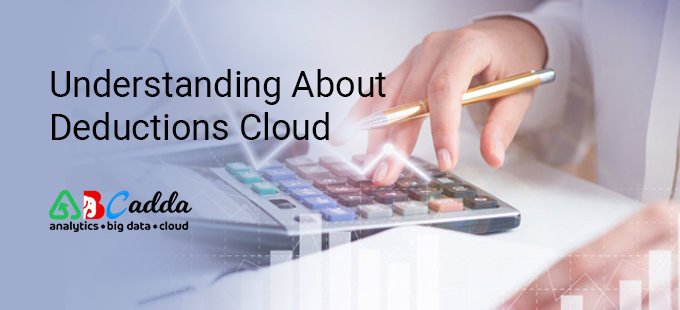Some of the most important parts of trade promotion management include budget planning, withdrawal management (Deductions Cloud) and claims handling. If managed properly, this process increases the company’s profits and reduces losses.
Given the complex process of trading costs, managing invoices, deductions, and accounts receivable is an ongoing challenge for manufacturers of consumer products.
This article explains about deduction management and deduction cloud software.
Understanding About deduction Process
When you receive a payment from a customer, the customer can change the payment amount for unknown reasons or for reasons related to a specific invoice or invoice group, such as: damaged goods, reduce. The deducted amount of the customer payment is called the deduction.
Deductions are usually made by customers as compensation or deficiencies in products or services. Some common reasons customers might be able to take a cut are:
- Damaged or defective goods.
- Shortage of delivery.
- Advertising money.
- A controversial number
- Billing error.
Depending on your internal procedures, you can determine who is authorized to process the prints. For example, the Loans and Receivables department may require a deduction manager to resolve problems. You enter this information in the customer master record.
What is deduction management?
Deduction management (also known as accounts receivable management) is the monitoring of the payment methods used by producers, where they charge the customer for the full invoice amount and the customer can deduct or pay less than the amount due to him. The company has an entire department in charge of processing, reviewing, and cleaning prints.
When consumer products companies evaluate their recall management teams, they usually focus on two main objectives:
- Resolve disputes as quickly as possible
- collect payments. While these two priorities are still important, there are other ways organizations can think about their deductions.
Managing deductions, disputes, and refunds is one of the challenges that arises from this complex sales process. During the payment process, customers may pay less than what is stated in the invoice due to discounts received, incorrect delivery and more.
The amount that is under the invoice in the process of payment is called a deduction.
Usually, practitioners categorize deductions into two types:
- Trade deductions
- Non trade deductions
Trade deductions: The deductions that result from promotions, discounts, rebates, and advertising are called commercial deductions. Such cuts are easy to investigate and complete because promotions and discounts are usually planned in advance and tracking deductions from trades is easier to navigate.
Non-Trade Deductions: This makes all other types of deduction like damaged delivery, invoice error, shortages etc. These can be mixed, often unpredictable and complex, and may require team collaboration within an organization.
What is Deductions Cloud?
Deductions Cloud offers automation, process standardization, and a platform for collaboration between departments and customers. The solution provides the most reliable automation mechanism available to collect customer withdrawal data and provide the information required for authorization.
Archival documents such as proof of delivery (POD) and waybill (BOL) are automatically recorded and linked to the appropriate pieces to reduce manual surveying.
Relevant trade promotions are also identified and offered for processing. Automated workflows and correspondence engines optimize communication and approval processes. The result is proactive deduction management that recovers revenue from invalid deductions.
Emagia Deductions Cloud automated backup extraction, predicts print validity, and speeds up print resolution with a structured workflow, reducing depreciation.
Emagia Deductions Cloud automates backup retrieval, predicts print validity, and speeds up print resolution with a structured workflow, reducing shrink. It maintains deduction management by providing:
- Powerful claims mechanism and POD automation to automatically download and capture information from all archived documents.
- Structured workflow and collaboration mechanisms for optimized communication with customer service, warehouse, and sales teams for a faster printing solution.
- Automatic correspondence mechanism with customers for faster cooperation with customers.
- Ability to make deductions during cash submissions even if the customer does not provide a complaint document.
- Ability to automatically match and complete all trade discounts while easily integrating with most trade promotion management systems.
- Automated web push mechanism for uploading forms and automatically opting out of packages to client portals and websites.
Key Features of Emagia Deductions Cloud automated:
- Reduction workflow provides consistent processing and allows for automated collaboration and authorization between agencies.
- Trade promotion agreements provide a central system for managing, comparing, and authorizing line items for reduction (SKU level) versus trade promotion.
- POD & Claims Automation Engine collects and collects information such as POD (Proof of Delivery) from the operator’s website and claims / direct debit / transaction sheets from the customer portal, website and email.
- Correspondence automation generates and distributes customer correspondence rejection based on account status and deductions, and attaches receipts according to individual customer requirements.
Emagia Deductions Cloud Pros:
- Increases deduction recovery rate by more than 10%.
- Deductions payable for days (DDO) less 30%.
- Free up 20-40% of your resource time by automating manual activities so they can focus on higher quality research and analysis.
- Limit upfront capital costs and minimize the need for in-house IT engagement by using a pay-as-you-go SaaS solution with a monthly subscription fee.
Conclusion about Deductions Cloud
Deduction automation has clear value. By automating this type of print, most of the total printouts can be optimized. It increases business value at all stages of the restructuring chain, including finding trade reductions, summarizing reserves, reconciling trade promotions, research, correspondence, and closings.
Best-in-class solutions employ robotic process automation (RPA) and artificial intelligence (AI) concepts to achieve higher levels of automation and minimize low-value manual tasks.
In addition, the business value of deduction automation can be measured using three different indicators, including operational efficiency, reduction of DDO, and increase in deduction recovery.
The return on investment model must take these improvements into account and measure the utility of the dollar to determine whether or not the dollar is successful.
